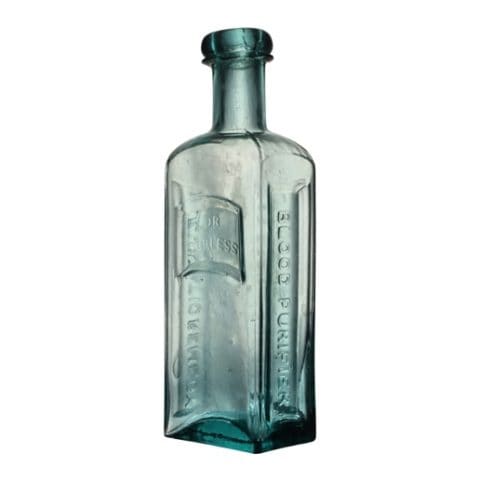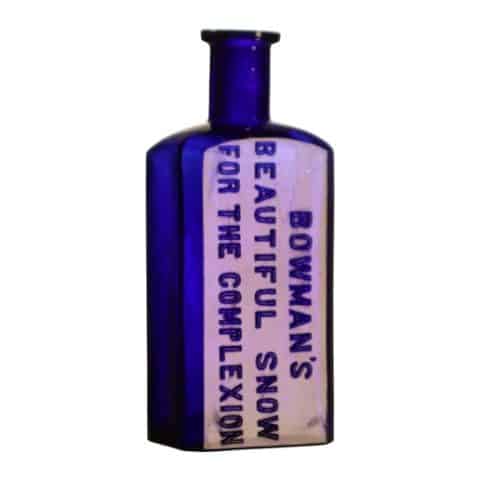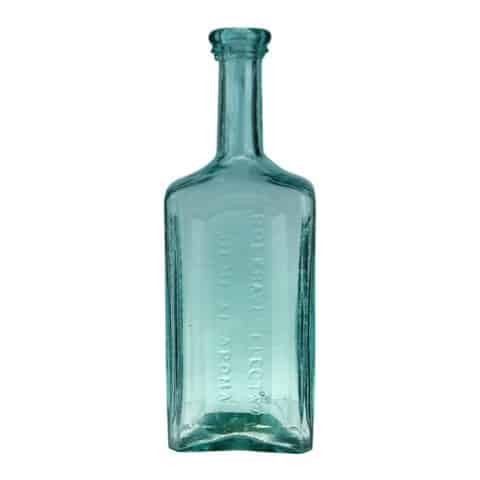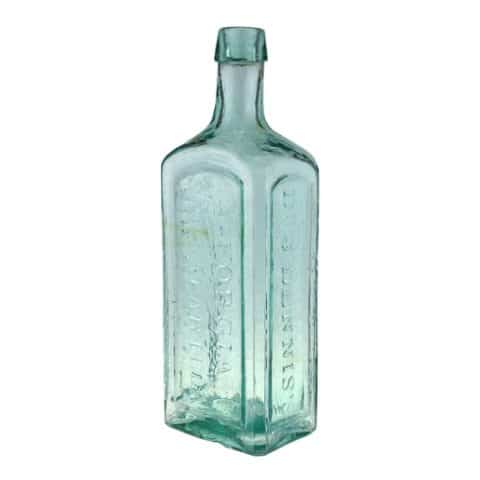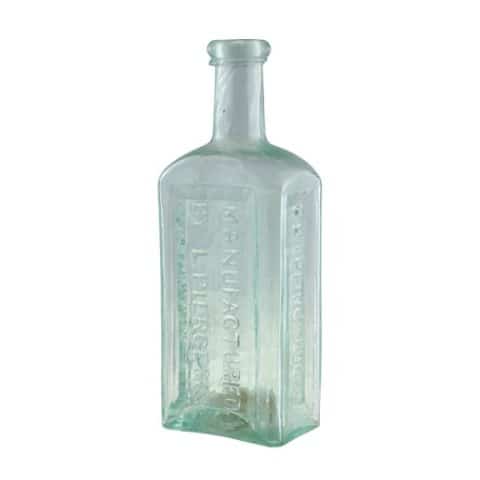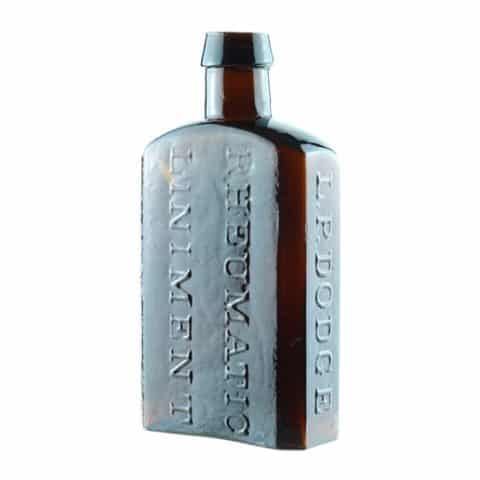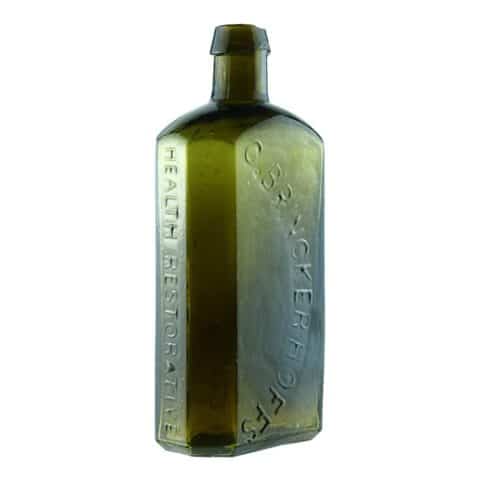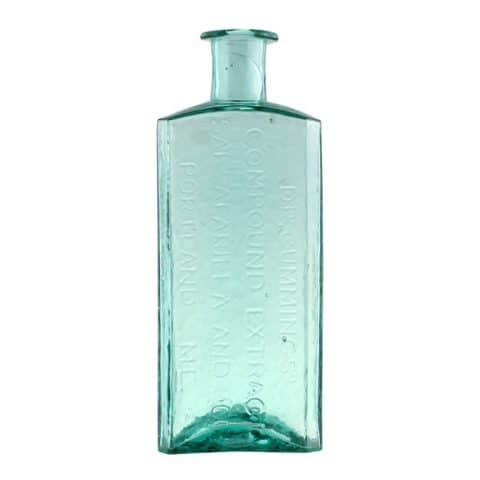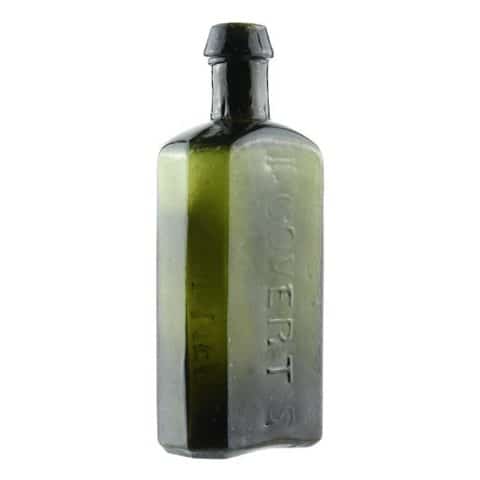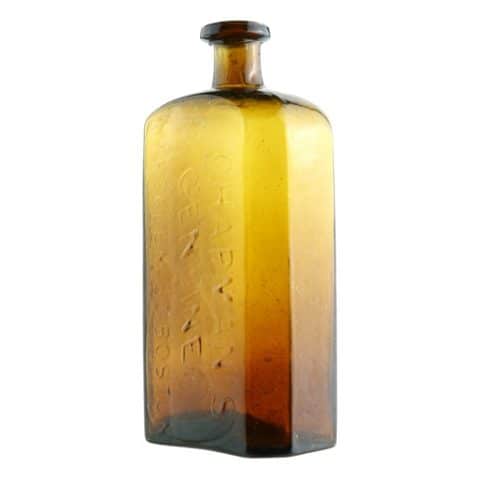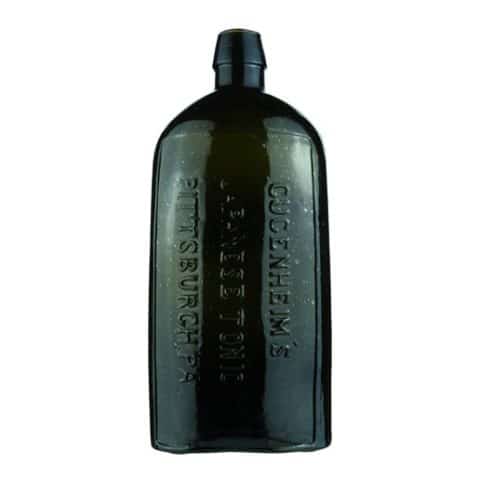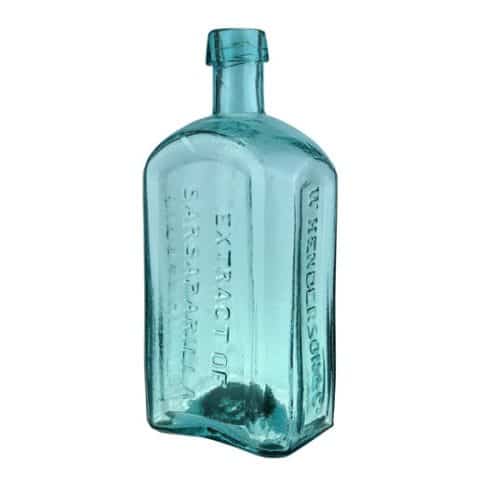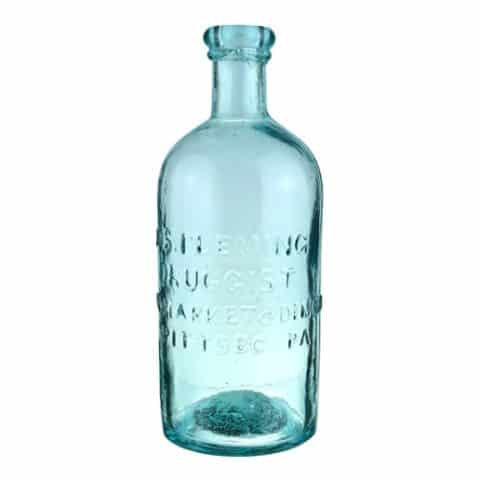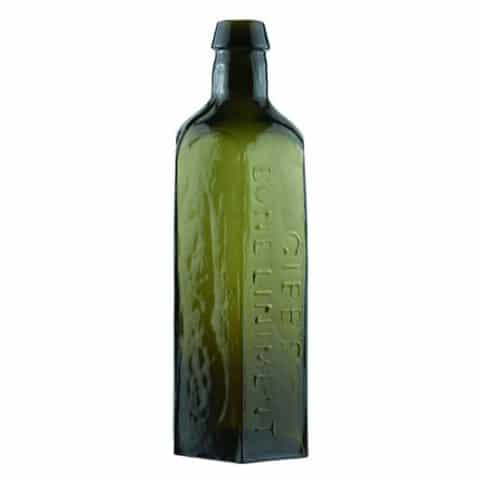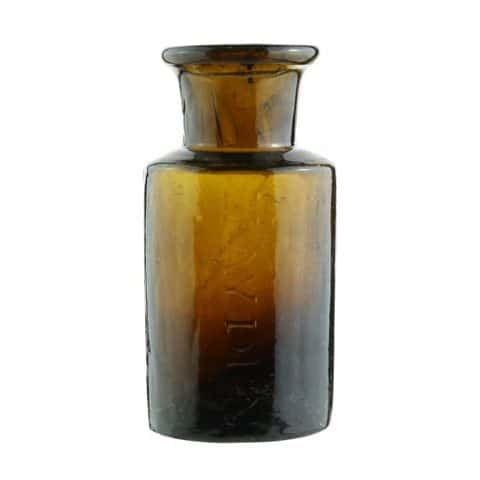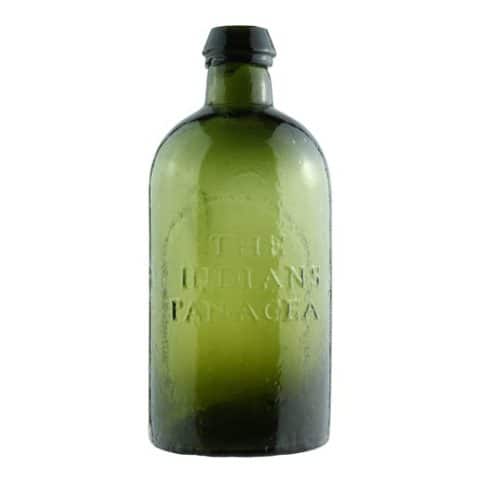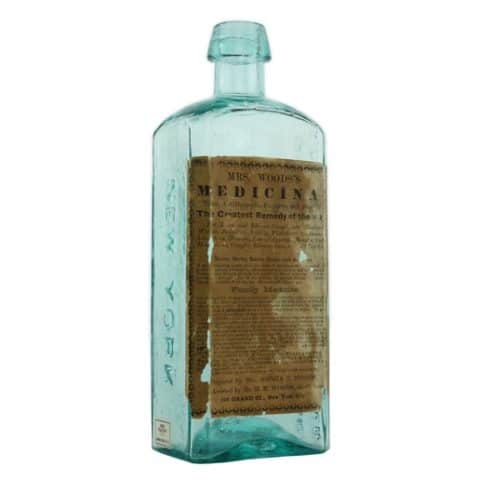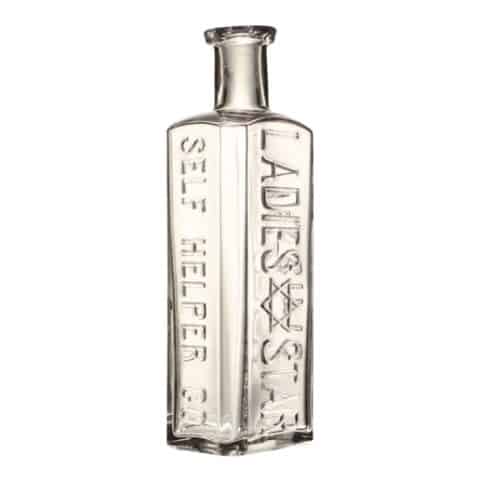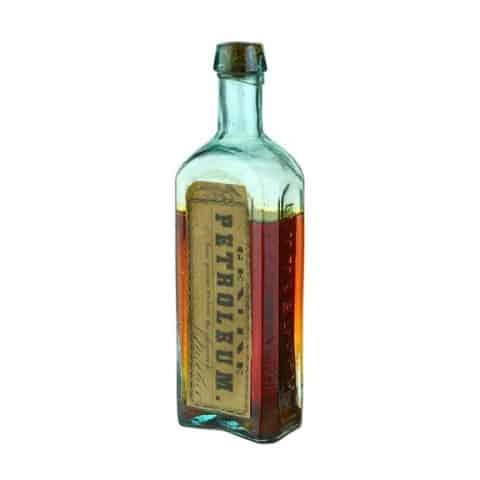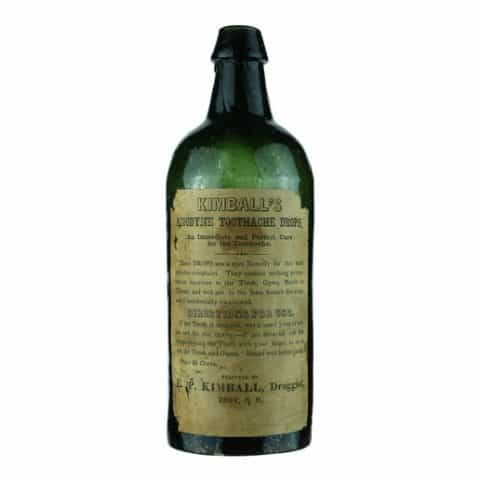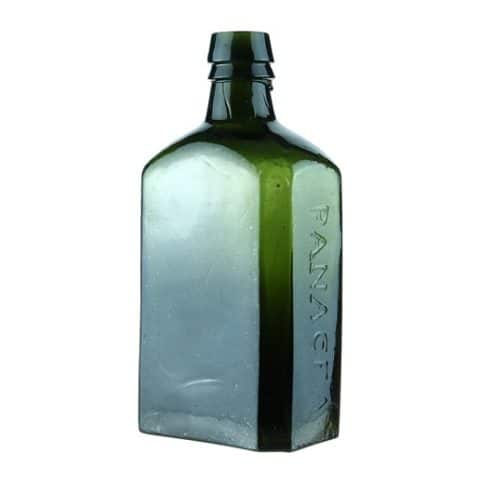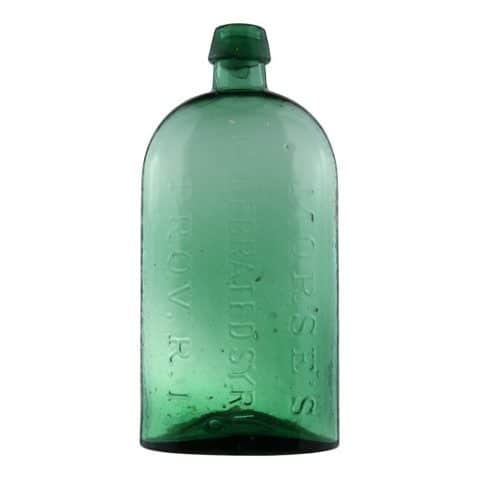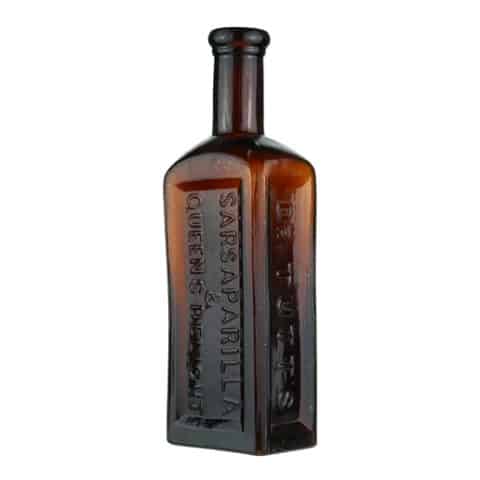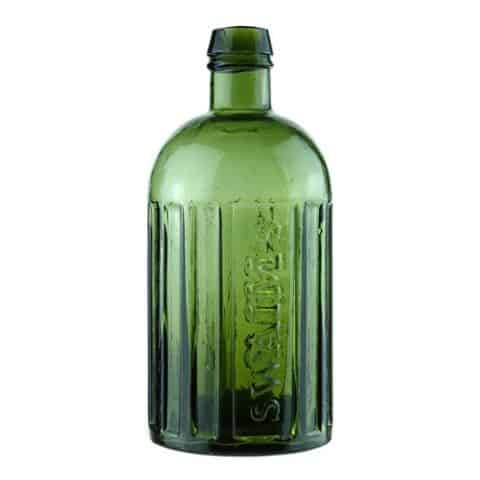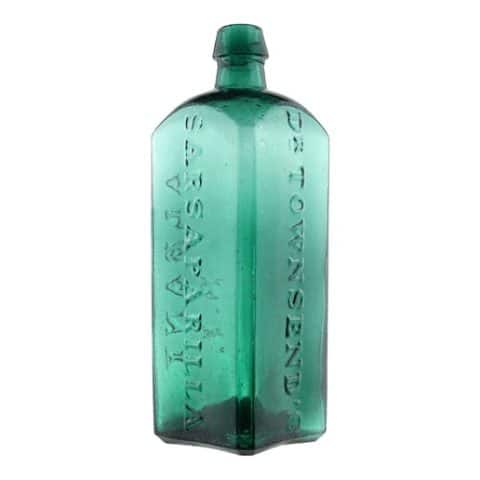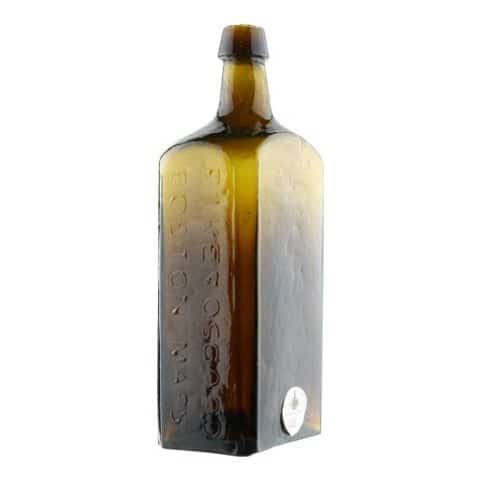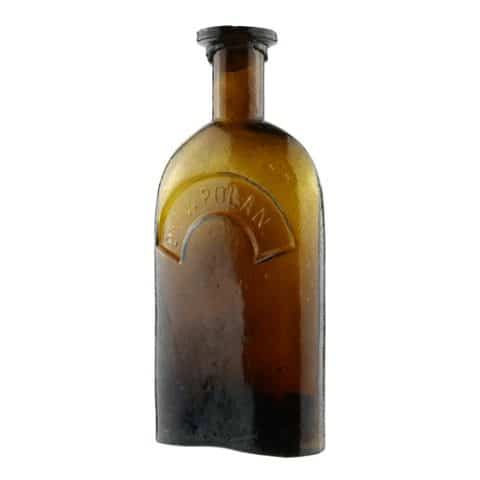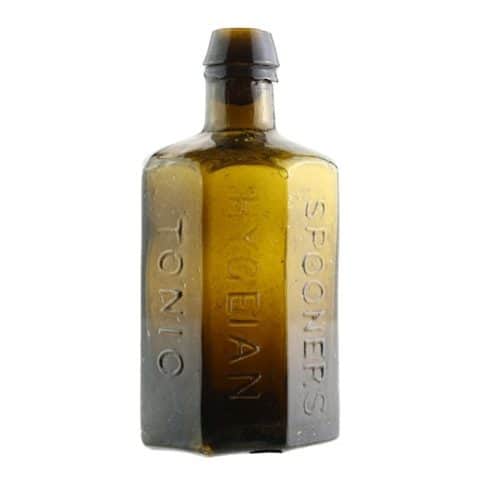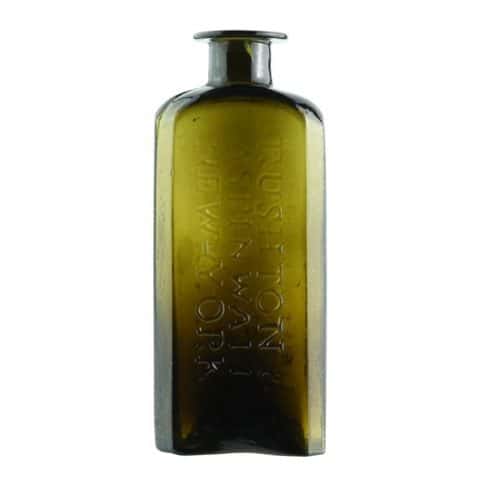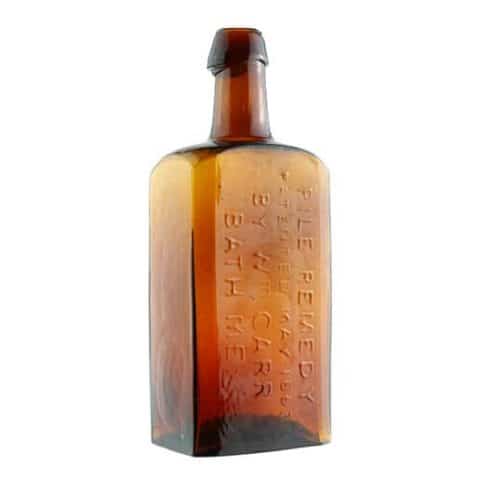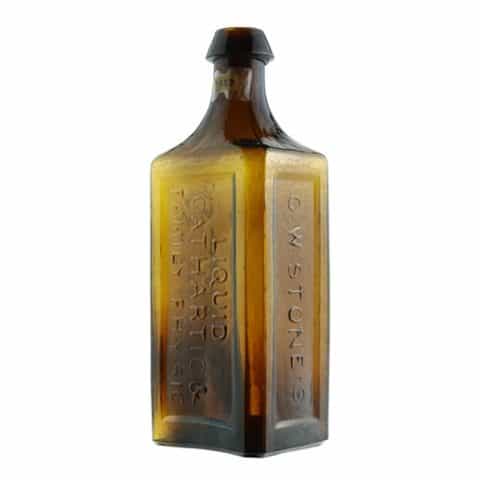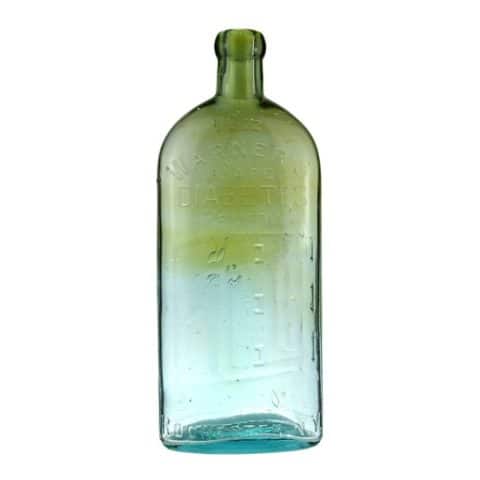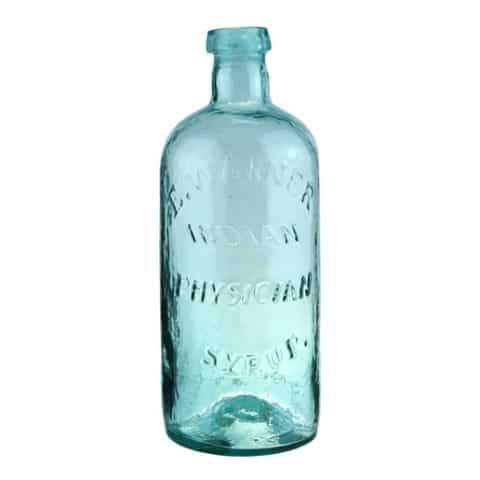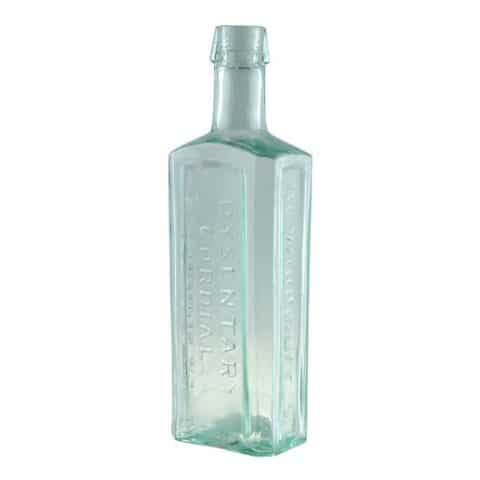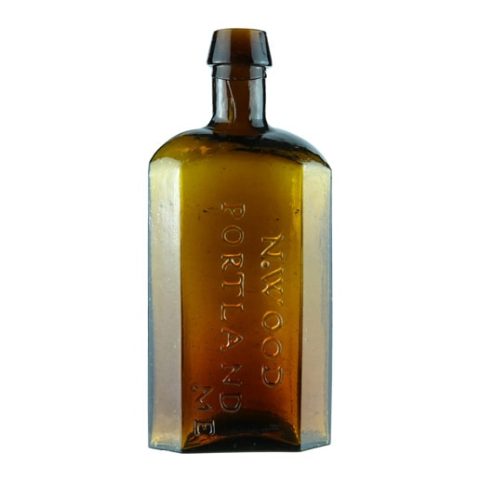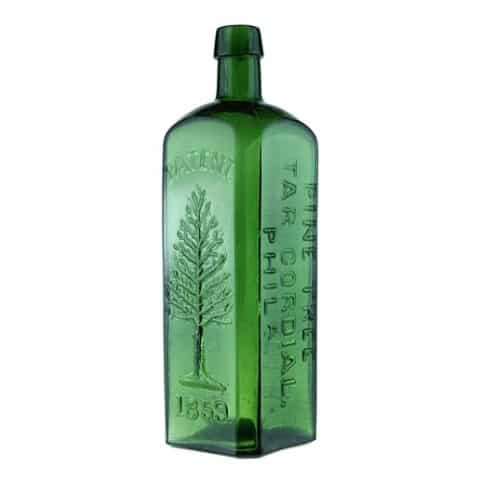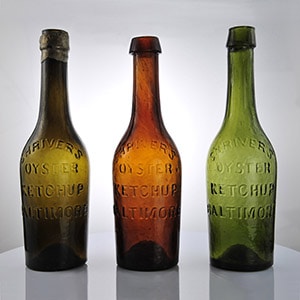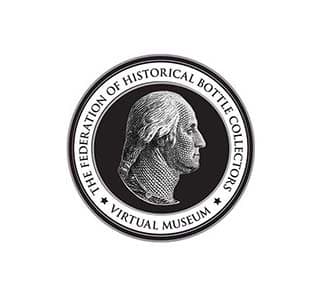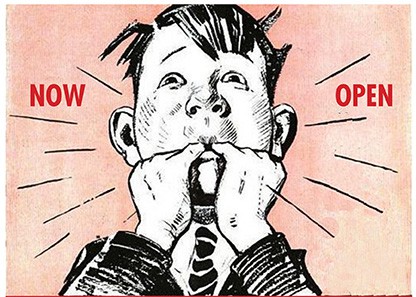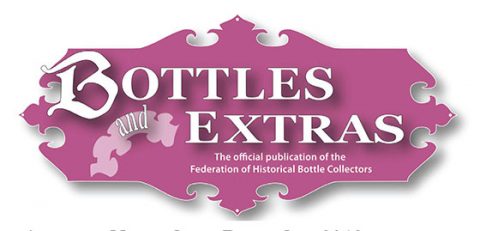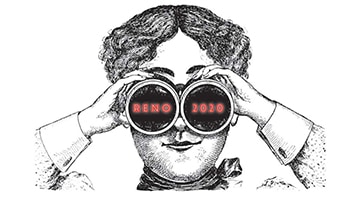Pike & Osgood Alterative Syrup Boston Mass
Pike & Osgood
Boston Mass
Alterative Syrup
Attributed to J. T. Gilman Pike and David Osgood, Boston, Massachusetts
Yellow Olive Amber Medicine Bottle
Provenance: Richard S. Ciralli Collection
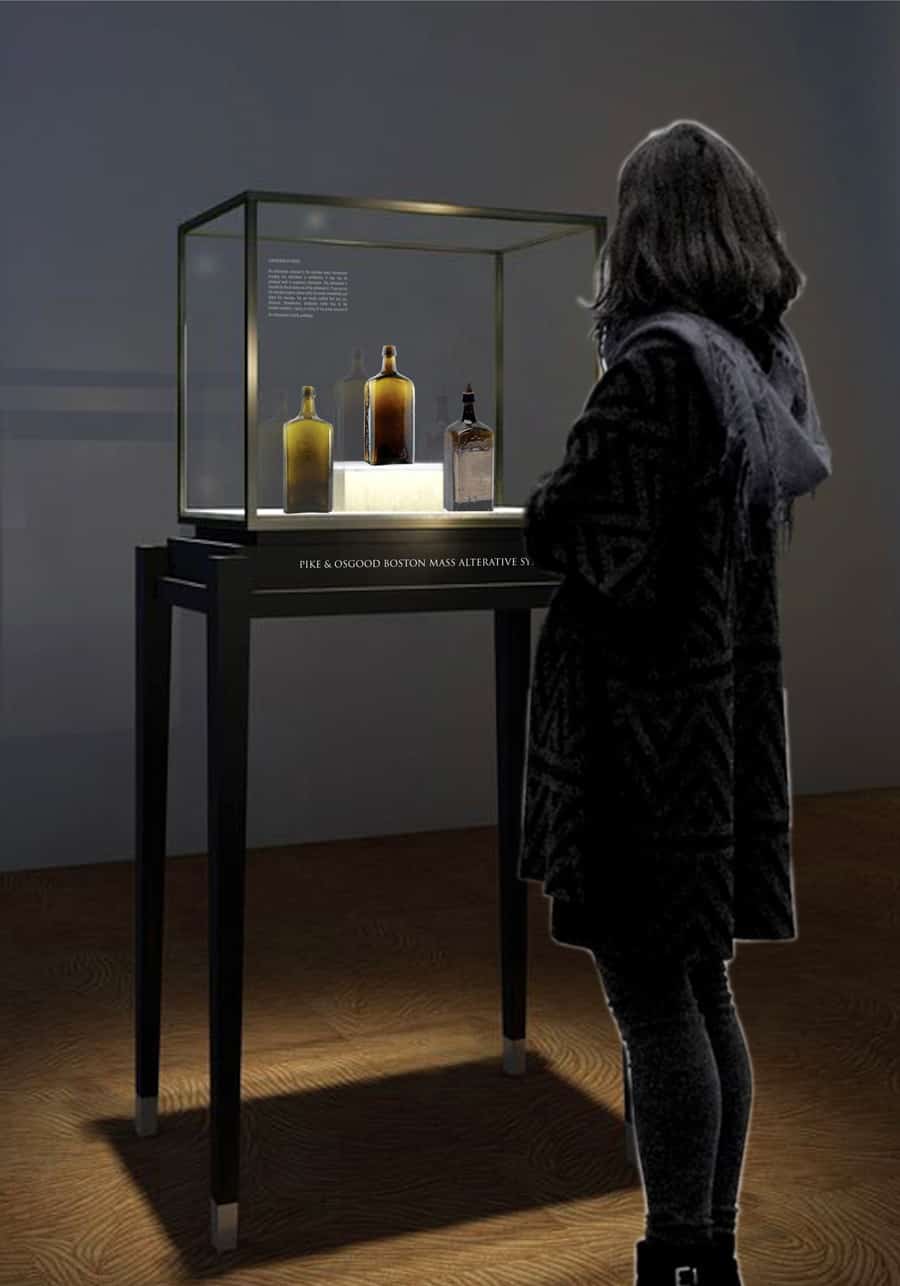
Our museum example represents a robust “Pike & Osgood Alterative Syrup” medicine bottle from Boston, Massachusetts that is ex James Chebalo collection. J. T. Gilman Pike was born about 1814 in Exeter, New Hampshire. He was a prominent and esteemed physician who practiced in the city of Boston. David Osgood was born in 1794 in Massachusetts and was also a well-known physician practicing in Boston. Pike and Osgood paired up in the mid to late 1840s to mid-1850s and had their last names embossed on a highly sought after and desired patent medicine bottle.
Our 8-½” tall medicine bottle was blown in a beautiful yellowish olive amber glass that is both crude and whittled. The bottle is rectangular, with beveled corners, slightly arched shoulders, and has a tapered neck that terminates with an applied sloping collar. There is a pronounced blowpipe pontil scar. The embossed copy occurs on the short side panels. One side is embossed in two lines, shoulder to base in a transitional typestyle ‘PIKE & OSGOOD’ and ‘BOSTON MASS.’ The other short side is embossed in a similar manner, in one line, ‘ALTERATIVE SYRUP.’ A paper label was used on one of the broad panel sides that engaged the bevels. A labeled example is pictured in the museum.
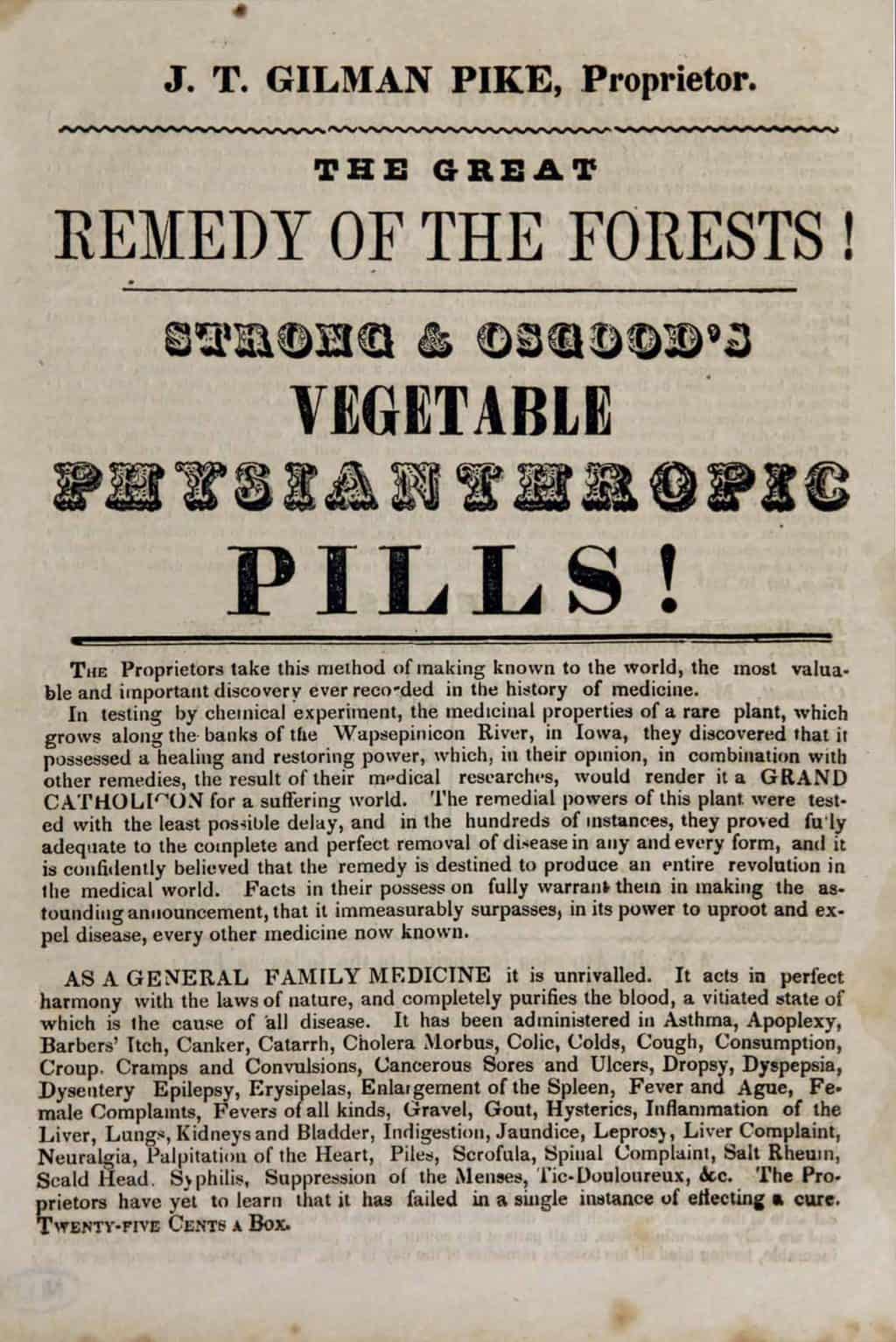
In 1847, J. T. Gilman Pike was the Proprietor of “The Great Remedy of the Forests,” “Strong & Osgood’s Vegetable Physianthropic Pills.” The pills were prepared by Drs. Strong and Osgood for the purification of the blood. Not long after, Pike & Osgood’s Alterative Syrup was being advertised in New England newspapers. The label on the bottle said it was a “Blood Purifying Syrup” indicating that the syrup was the next generation of the pills.

In 1848, an advertisement said that the J. T. Gilman Pike establishment had existed in Boston for ten years and that it was the oldest of its kind in the United States and the largest in New England. Advertising further stated that the Physianthropic Pills were invented and prepared by Drs. Strong and Osgood and that testing and chemical experiments of the medicinal properties of a rare plant that grows along the banks of the Wapsipinicon River, in Iowa was the basis of this new medicine.
J. T. Gilman Pike practiced Thomsonian Botanic Medicine from his office located at 79 and 81 Blackstone Street in Boston, Mass. The “Botanics” were physicians who refused to purchase their medicines from regular pharmacies for fear of adulteration. They also objected to the use of Latin in prescription writing because of its implied secrecy. Instead, Botanics tried to control their own drug trade by either making their own medicine or purchasing them directly from wholesale botanic medicine firms. Eventually, there was a decline of Thomsonism as the physios lacked sufficient numbers to sustain their own distinctive drug trade.

J. T. Gilman Pike died at the Pavilion, Tremont street, on Friday morning, January 10, 1879, where he had resided for several years. He was 65 years old and left a son and daughter.
Primary Image: Pike & Osgood, Alterative Syrup bottle imaged on location by Alan DeMaison, FOHBC Virtual Museum Midwest Studio
Primary Image: Auction Lot 228: “PIKE & OSGOOD / BOSTON MASS – ALTERATIVE SYRUP”, New England, probably an early Stoddard glasshouse, 1845 – 1855. Yellowish olive amber, rectangular with beveled corners, applied sloping collar – blowpipe pontil scar, ht. 8 ½”; (a 7/8″ crack extends from the pontil to the edge of the base; a 1 ½” pontil flake also extends to the edge of the base, possibly in-making). Odell, p.280. A beautiful example, crude and whittled. Provenance: James Chebalo collection. As rare as the Pike & Osgood’s are, most of the known examples do have some form of damage. The noted damage is on the base and other than some typical light exterior wear, the bottle displays as virtually attic mint. An iconic New England pontiled medicine. – John Pastor, American Glass Gallery, Auction #22
Support Images: Auction Lot 64: “Pike & Osgood / Boston Mass” – “Alterative Syrup” Medicine Bottle, a Stoddard glasshouse, Stoddard, New Hampshire, 1840-1860. Rectangular with beveled corners, olive amber, applied sloping collared mouth – pontil scar, ht. 8 3/4 inches; (shallow 1/2 inch by 3/4 inch pontil flake extends to edge of base). AAM pg. 412 Retains original label which reads in part, “Blood Purifying Syrup”. Extremely rare. Fine condition. – Norman Heckler Jr. & Sr., Norman C. Heckler & Company, Auction #106
Support Images: Auction Lot 8: “Pike & Osgood / Boston Mass” – “Alterative Syrup” Medicine Bottle, a Stoddard glasshouse, Stoddard, New Hampshire, 1846-1860. Rectangular with beveled corners, medium olive amber, applied sloping collared mouth – pontil scar, ht. 8 1/2 inches; (light exterior high point wear). AAM pg. 412 Wonderful color and whittle. Extremely rare. Fine condition. – Norman Heckler Jr. & Sr., Norman C. Heckler & Company, Auction #128
Support Image: Auction Lot 261: “PIKE & OSGOOD / BOSTON MASS – ALTERATIVE SYRUP”, (Odell, pg. 280), Massachusetts, ca. 1840 – 1860, deep ‘old’ amber, 8 5/8”h, pontil scarred base, applied tapered collar mouth. A very faint in manufacturing 1/2” long horizontal surface fissure is on a label panel. Also a few areas of minor stain. Good glass whittle, plenty of seed bubbles and the mentioned flaw can only be seen in the correct light. You are bidding on a rare and important New England medicine bottle! – Jim Hagenbuch, Glass Works Auctions, Auction #100
Support: Reference to Kindly Medicine Physio-Medicalism in America, 1836-1911 by John S. Haller, 1997
Join the FOHBC: The Virtual Museum is a project of the Federation of Historical Bottle Collectors (FOHBC). To become a member.


